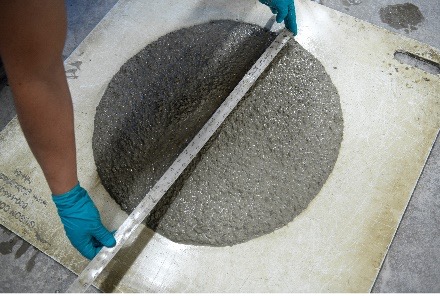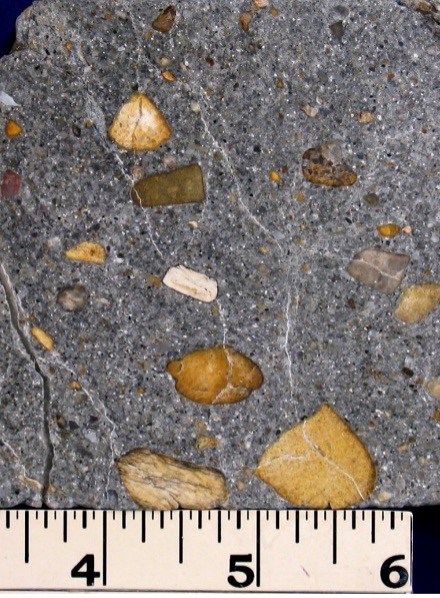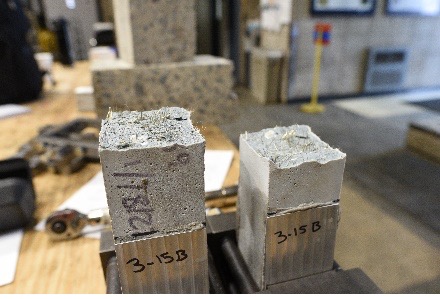|
Concrete Construction: Understanding the Risks, Remedies, and Ramifications Ever since the Romans put concrete to use on a large scale circa 200 B.C.E., it has been at the heart of civilization—critical to the development of communities, metropolises and countries, and a mainstay of progress across generations of societal evolutions. To make the argument that concrete stands the test of time, you only need to look at the existence of the Pantheon. Built two millennia ago, the monument still stands strong and safe enough for more than 6 million visitors to admire each year. So why, when we drive through developed areas, are we likely to observe a concrete wall with a few cracks, spalled and broken sidewalks or a crumbling concrete structure of some type—or even worse, a site where a building was either demolished or experienced some type of concrete failure? Why is everyone—from facility owners to designers, builders, and contractors—at risk of being involved in litigation connected to concrete construction? The simple answer is that in addition to its durability, strength and ubiquity, concrete is an extremely complex substance. As such, any number of factors—from temperature to moisture level and exposure to the elements—can compromise its aesthetic appeal and performance. Consider temperature, for example. For most of us, 50 degrees Fahrenheit is hardly extreme cold, but for concrete, it is the threshold for when the set rate goes from slow to very slow. Drop another 10 degrees, and the hydration reaction of concrete basically comes to a halt, as does its strength gain. Not accounting for the impact of this temperature change can lead to the hardened concrete not achieving its specified design strength, durability characteristics, and other critical performance properties for serviceability. Engineers have been studying concrete for quite some time, and we continue to do so. Consequently, we understand a great deal about how it acts and reacts to harsh environmental conditions. This knowledge supports better management of risk in concrete construction. For anyone involved in concrete construction, the insights of these specialists—who are often structural engineers or material scientists—are imperative to optimizing the integrity of the structure and the safety of everyone who interacts with it, from the earliest phase of building through decades after project completion. I. Risk and Remedies Below, we will look at some of the main risks of concrete construction—with the disclaimer that this list does not represent all the risks or places where things can go wrong. Still, having a basic understanding can go a long way in helping to mitigate risk and in achieving a high-quality, long-lasting final project.
When most building materials, such as steel and lumber, arrive at a job site, they are as strong as they are going to be. Not so for cast-in-place concrete, which enters a jobsite in the fresh slurry state, before hardening. Concrete’s strength evolves over time. In the process, heat is produced, which needs to dissipate. If the process occurs too quickly or slowly, it can cause cracking and long-term durability issues that can lead to litigation. The standard is to evaluate concrete 28 days after the placement to ensure it has reached the compressive strength specified by the designer for the project. Of course, good luck finding a project manager willing to halt work for 28 days. After about a day, the concrete is solid but only has about one-third of the strength it will achieve at 28 days. Knowing that strength will continue to increase, work often continues on faith that quality assurance measures for the concrete mix will remain true. Today, the industry has gotten proficient at managing much of this time-setting risk. We cast the same concrete for a project in cylinders and test the evolution of strength at various intervals. More recently, we have also started to employ sensors that test the concrete in situ after the placement.
Another time-related risk is that causes of concrete degradation—such as water ingress or excessive heat or cold—could also alter the hardened material. A more long-term time-related concept of concrete is service life, which is becoming an increasingly important part of project contracts. For example, a designer may specify a service life of fifty years. The contractor takes on a significant risk if that concrete shows problems before the service-life term is complete. If service life is specified, it is advisable to invest in upfront costs to have a qualified laboratory, such as CTLGroup, measure and model the predicted service life. Doing this can prevent greater costs in the long run associated with repair, reconstruction, or litigation.
In concrete construction, cracking is inevitable and impractical to avoid completely. It is imperative for an owner to be aware of this from the start and for the designer and contractor to manage expectations. The remedy to cracking is to control it as much as possible. For example, by strategically implementing joints, you can maintain the aesthetics of the concrete and keep cracking to acceptable widths, which are determined by the function of the structure and are more easily patched if necessary. Through proper reinforcement details, the size and frequency of cracks can also be kept to an acceptable level.
When you hear the phrase environmental exposure, you may think of concrete’s interaction with weather elements, which is part of the definition. Cold and heat, for instance, play major roles in concrete integrity and strength, requiring awareness and adaptation at the job site. The recommended concrete temperature at the time of placement for most applications is around 50 degrees Fahrenheit and should not exceed 70 degrees Fahrenheit. Variations above or below this range can impact set time and strength building, water demand, and cracking, so adjustments must be made. Moreover, concrete contains water, which expands during freezing, creating the perfect formula for cracking. One of the most common ways to prevent this is to add entrained air (microscopic air pockets) to the concrete mix, allowing room for water to expand during freezing. Other elements of environmental exposure happen within the concrete itself. Alkali-silica reaction (ASR) is frequently referred to as “concrete cancer” because of its potential to spread and inflict serious cracking and structural damage. ASR has to do with the reaction between silica found in some aggregates and the alkaline cement. When ample moisture is introduced, expansion occurs, exerting pressure and cracking the concrete from within. Incidents of ASR arose decades ago, when the industry transitioned from superior aggregates to more marginal ones. However, while better aggregates could offer a solution to ASR, supply and cost may be prohibitive for certain projects. Meeting the American Society for Testing and Materials’ (ASTM) quality standards for fine and coarse aggregates use in concrete can also help mitigate ASR issues.
Lastly, reinforcement corrosion presents another risk. Steel rebar is introduced to reinforce concrete and make it more structurally useful. The downside is that rebar within concrete corrodes over time, a process that can be accelerated by the ingress of chlorides from deicing salts or ocean spray. Corrosion can be slowed by using higher quality, less permeable concrete, burying the rebar deeper in the concrete, or both.
As architects and designers push the boundaries of concrete design, and the world continues to drive toward sustainability and zero carbon emissions, materials evolution is essential. While new materials are necessary and valuable, they come with challenges. A recent example that is making its way into the marketplace is ultra-high-performance concrete (UHPC). On the simplest level, UHPC contains additives such as fibers and plasticizers that yield a material that is highly flowable when fresh, but exhibits much lower permeability and higher strength, particularly in tension, than traditional concrete. UHPC offers high durability, crack resistance, flowability, high abrasion resistance, and more. It can also help accelerate construction schedules. The risk lies in treating UHPC like traditional concrete, which can lead to significant issues, because codes, specifications, and testing procedures that are appropriate for traditional concrete may not work for UHPC. It is important for all parties to be aware of these issues, and to not blindly use UHPC without understanding its requirements.
Another example is Type IL (phrased “one-L”) Portland limestone cement, a lower-carbon product introduced to help lower the building sector’s carbon footprint. Type IL cement’s changes in formulation—replacing 10% to 15% of the ordinary Portland cement in the mixture with lower CO2-intensive limestone powder—drive changes in concrete properties, such as a slower rate of strength gain and changes in water demand of mixtures. The potential positive environmental impact of Type IL cement use is desirable, but there is risk in treating it like traditional Type I/II cement and using it as a drop-in replacement. While newer products like Type IL cement lower concrete’s carbon footprint, we must ensure that the qualifying rigor is applied to these new mixtures.
Lastly, there is risk in considering codes and standards infallible. At CTLGroup we have investigated multiple failures where a building code did not capture a particular vulnerability. In one recent case I was involved in—a design-bid-build project—a major update to a code was enacted while the design was in progress. The designer was not technically at fault for specifying the design to meet the prior code, nor was the contractor at fault for accurately building the design. However, the result was a structural performance failure caused by well-known issues that were directly addressed in the new code to prevent these types of failures. The best designers are aware of industry trends and anticipate that codes and standards continually evolve. They stay ahead of pending changes to help ensure the highest-quality results of a project. II. Learning from Structural Failures It is estimated that an average of eight building-collapse disasters happen globally every year, resulting in 343 deaths. While structural failures are rare, when they do happen, they can be extremely costly. In addition to the threat to public safety, failures incur costs of insurance, litigation, demolition, rebuilding and more. It is the job of structural engineers to do everything possible to ensure failures do not occur. Today, we have many great tools and a large bank of knowledge to support this. The challenge lies in the fact that we design and build one structure at a time, and we cannot do a full-scale “crash test” of a structure. When structural failure does happen, it opens a forensic goldmine for us to investigate unknown vulnerabilities. They also often provide opportunities to change the state of practice and ensure higher levels of safety for future structures. This is why litigation can often help lower societal risk of future structure failures. However, if litigation settles quickly, or involves a sealing of records, it is important for society to continue these investigations through public agencies so the critical lessons can still be learned. III. ConclusionWhen people look at a towering concrete edifice or an elegant modern monument, it is hard to conceptualize that so much risk lies beneath. Concrete is much more complicated than people may think. Resources like CTLGroup—offering specialized testing, consulting, and structural health monitoring—exist to unravel the complexities and formulate solutions to manage concrete risk in construction, help ensure customer satisfaction, and maximize safety. Author Biography: David Corr serves as Principal Engineer & Materials Consulting Group Director at CTLGroup and is one of the nation’s leading experts related to structural performance, material characterization, and material development. Dr. Corr’s knowledge focuses on both traditional and emerging building materials. Specifically, he has studied the durability of concrete, the rheology and fresh-state behavior of concrete, and fracture and cracking in cement-based materials. He can be reached at [email protected].
|




